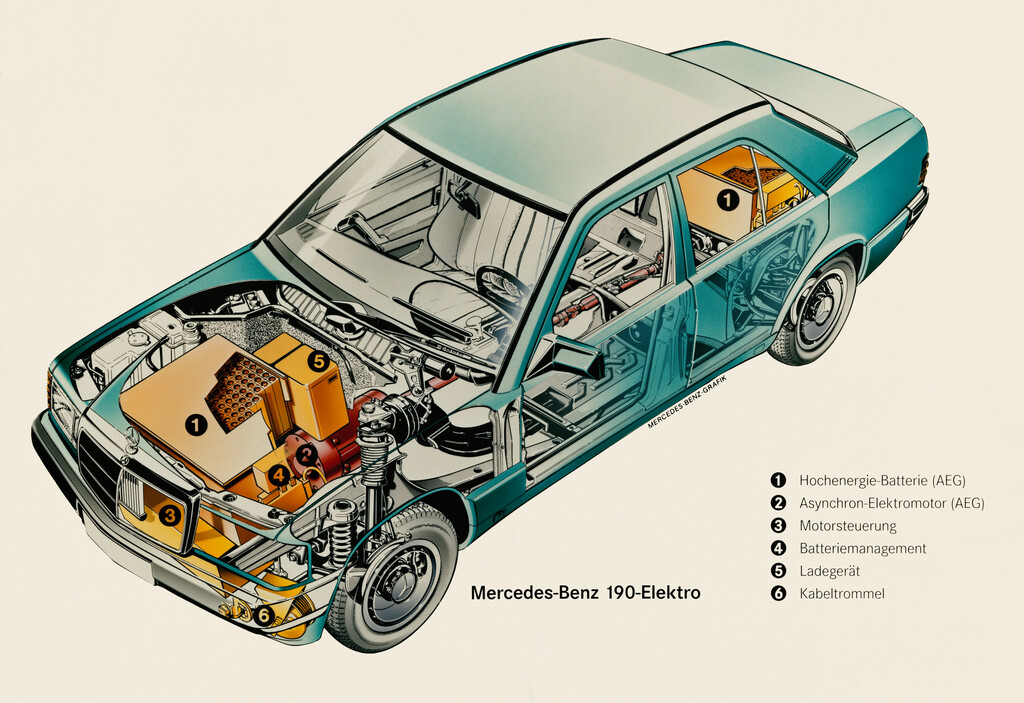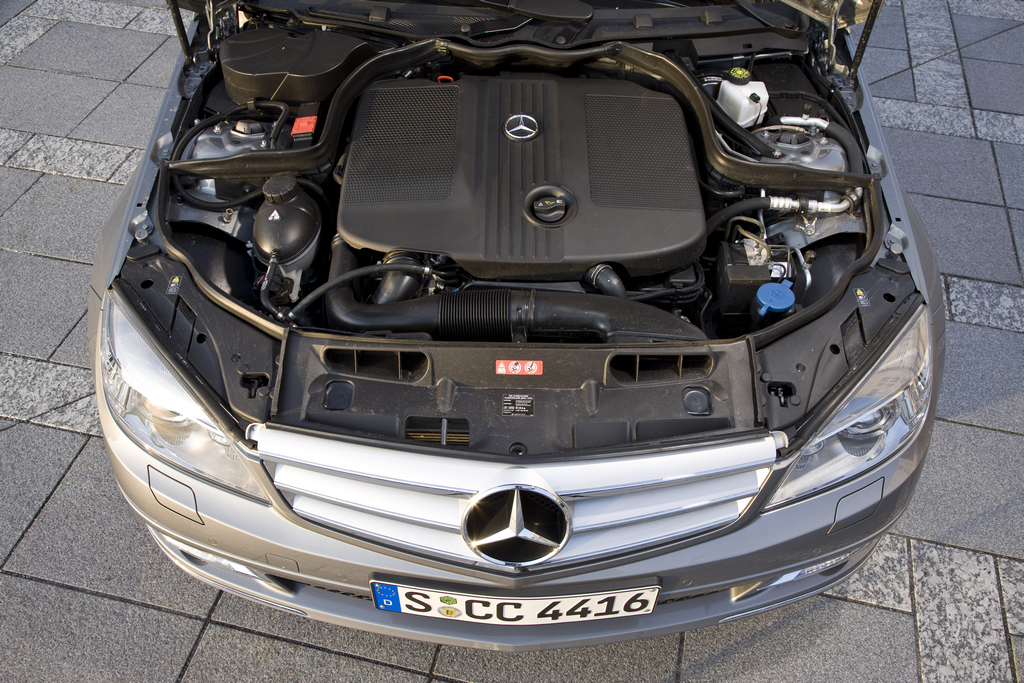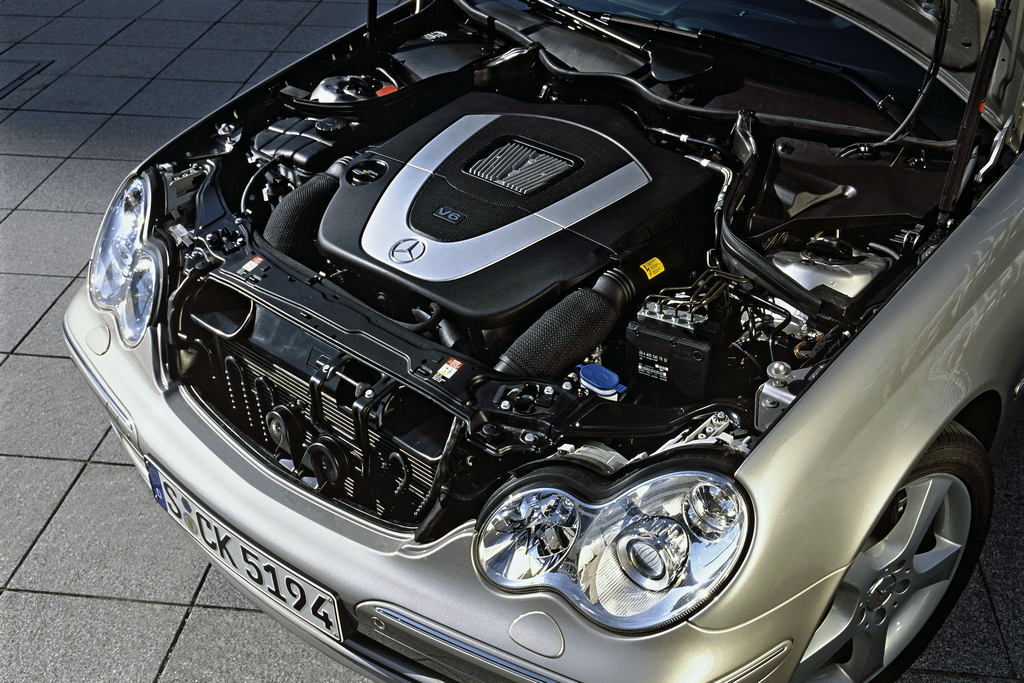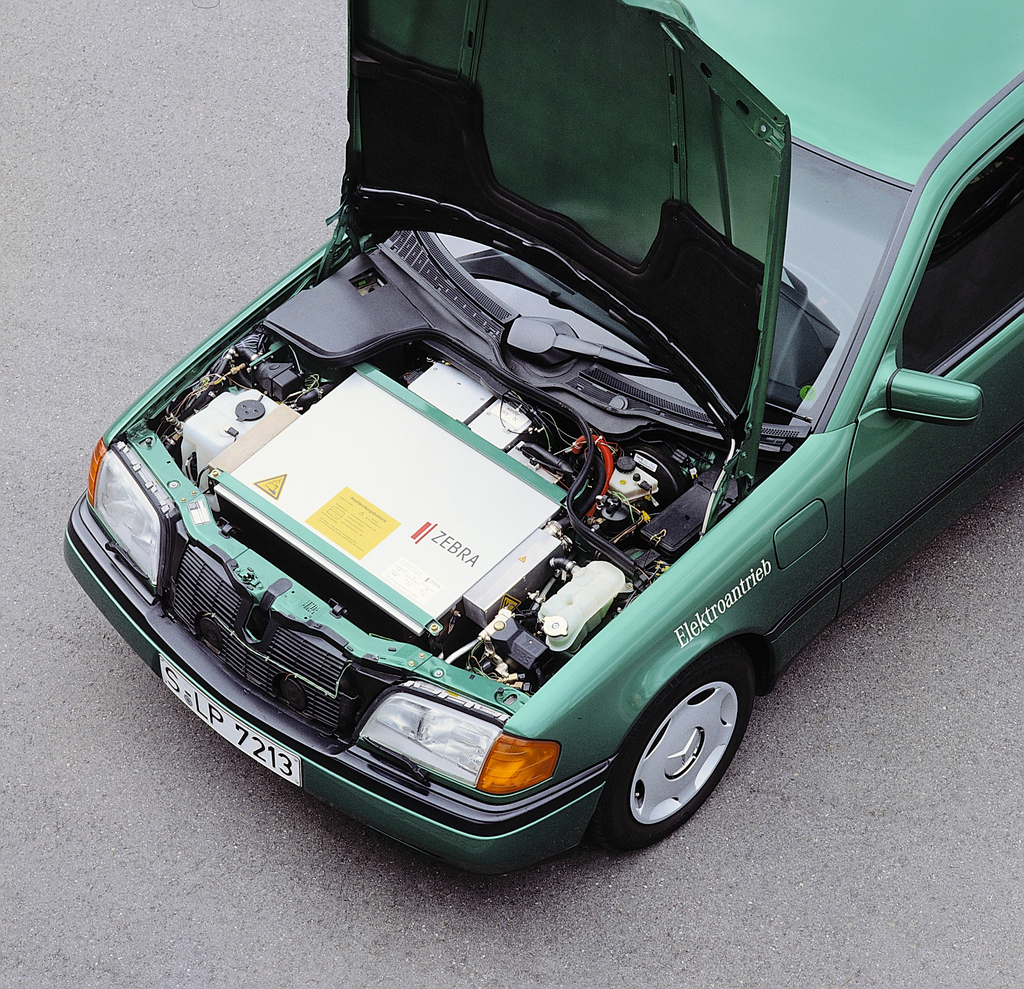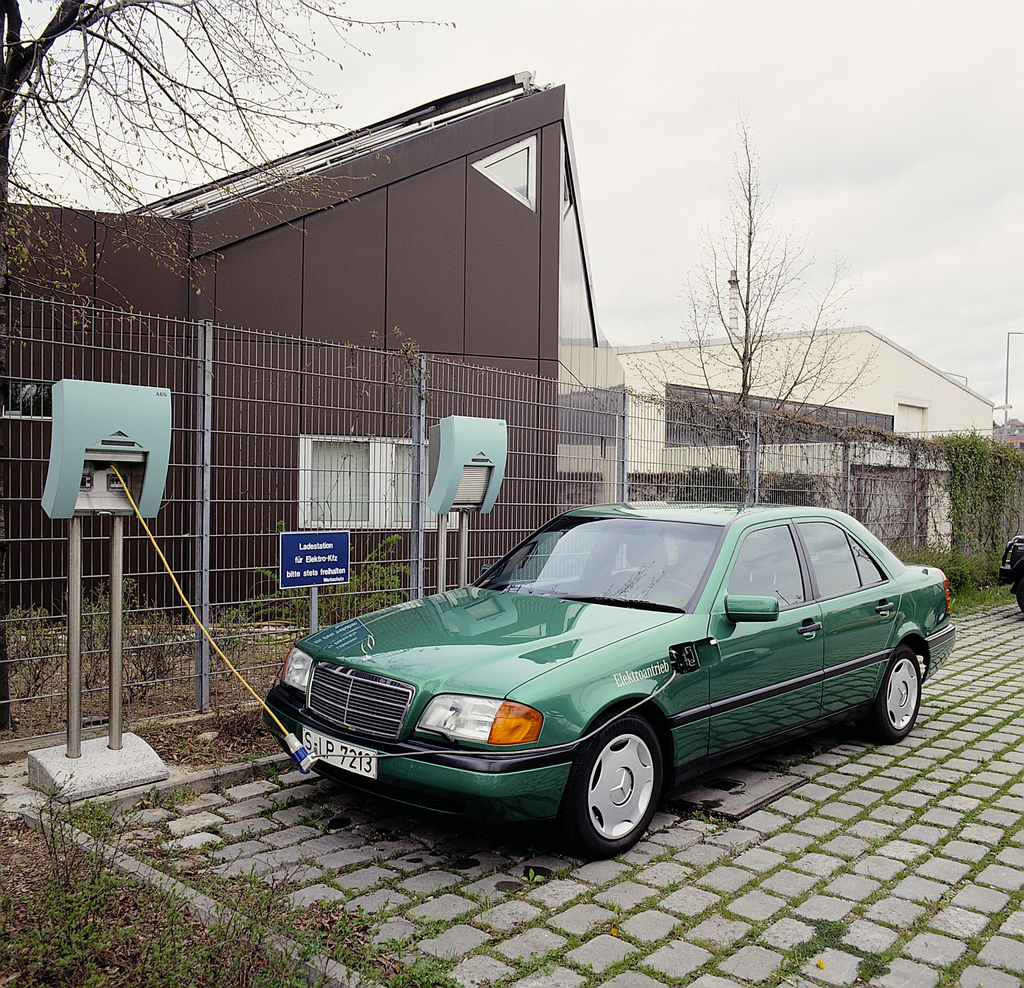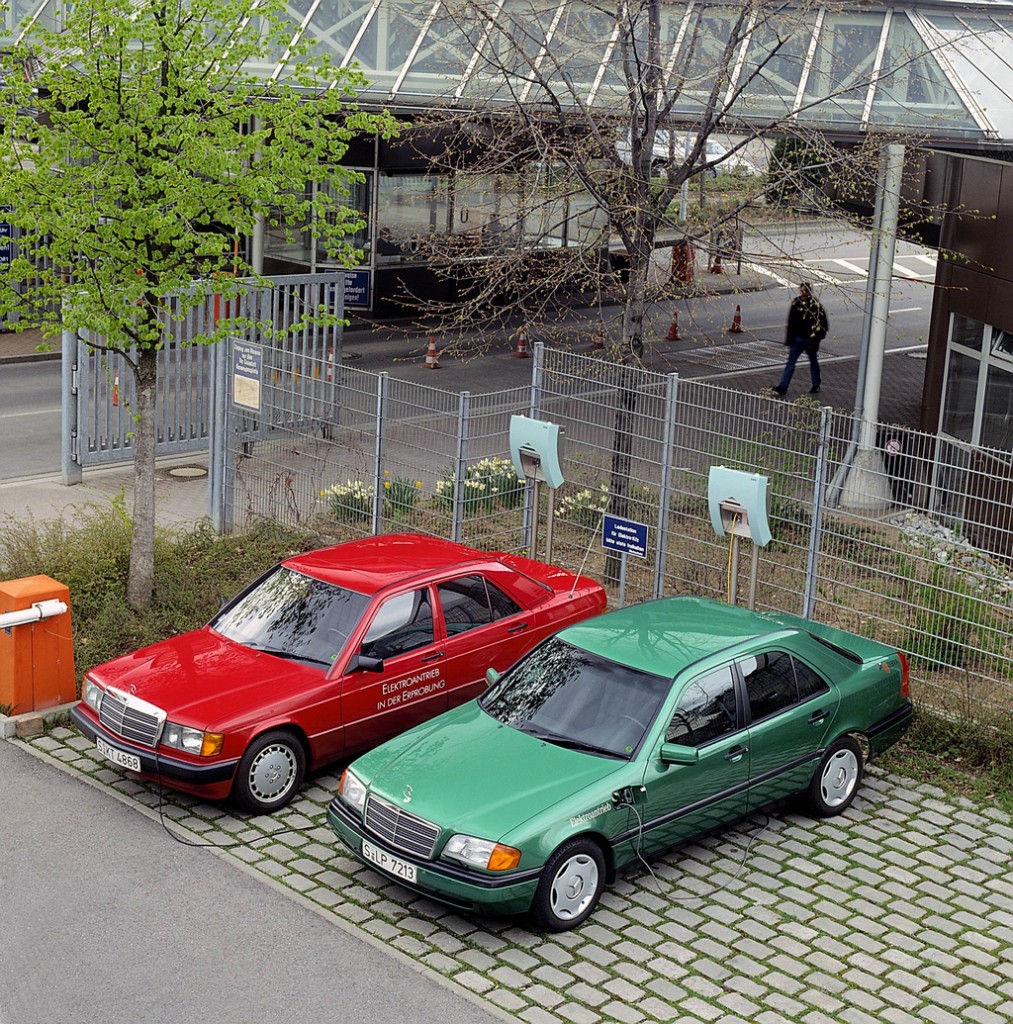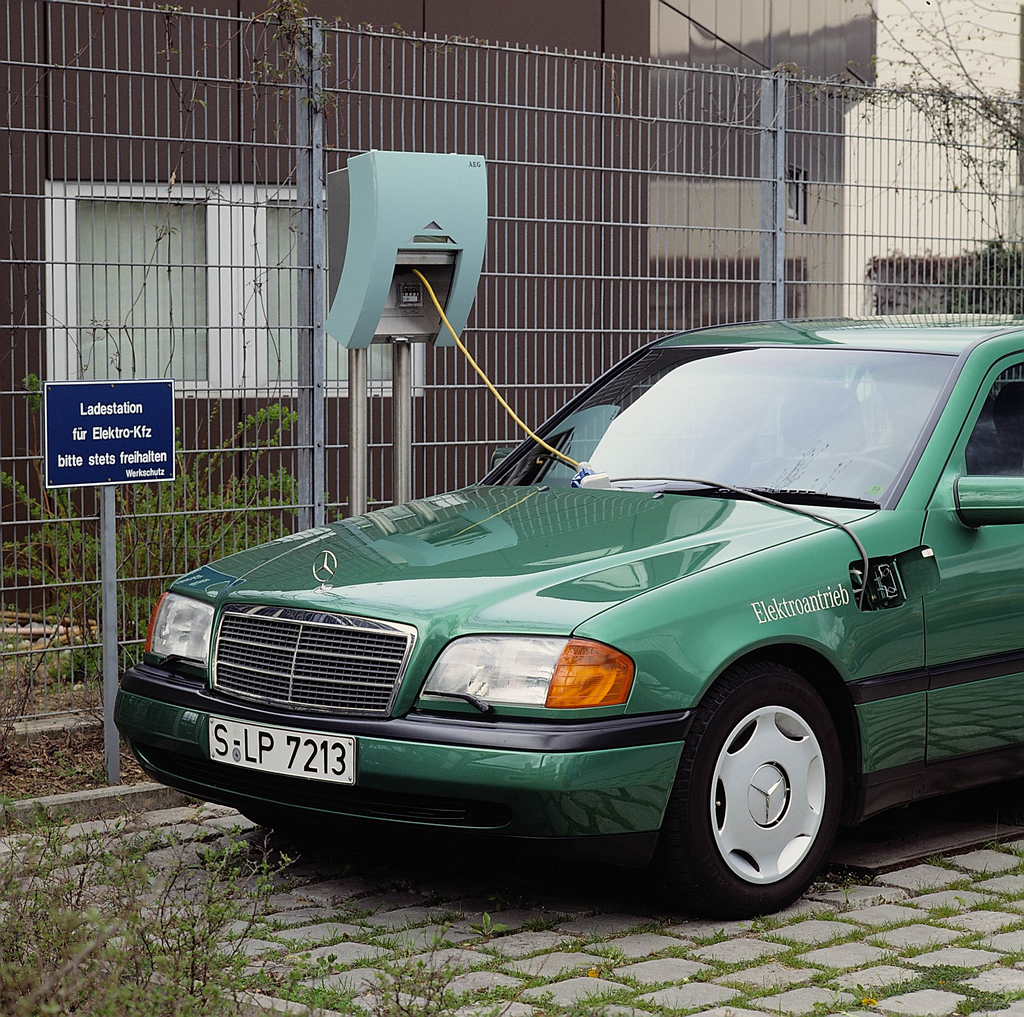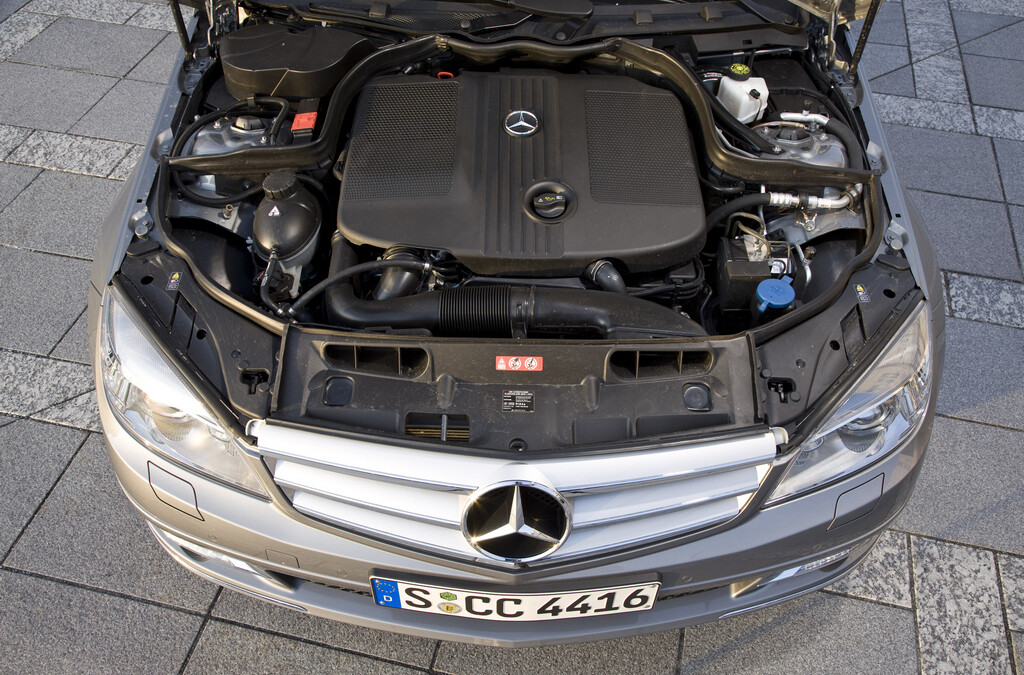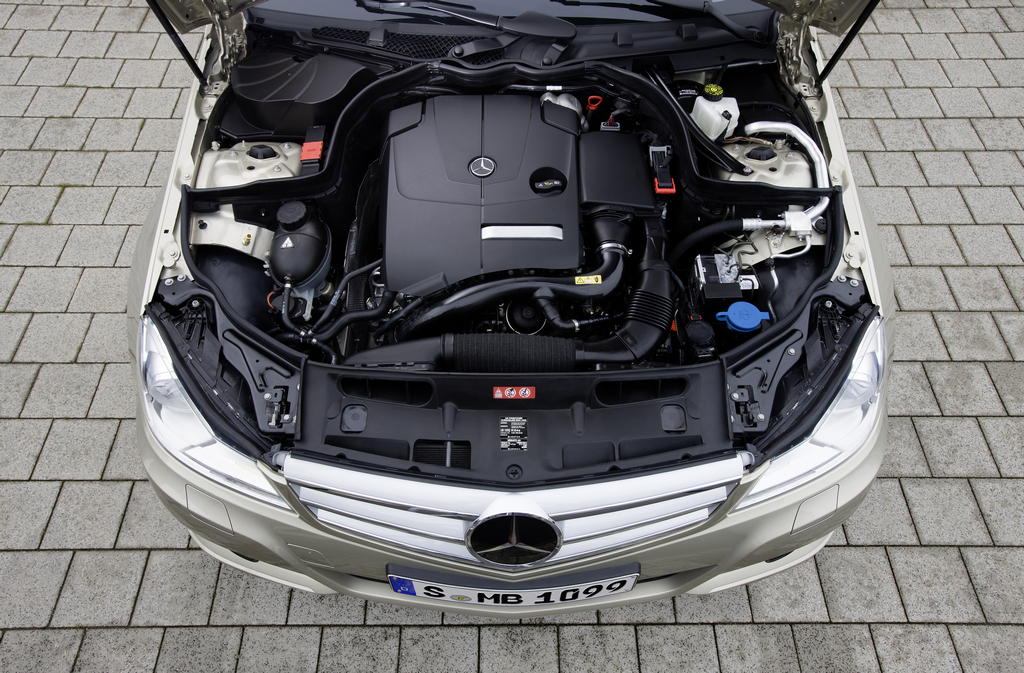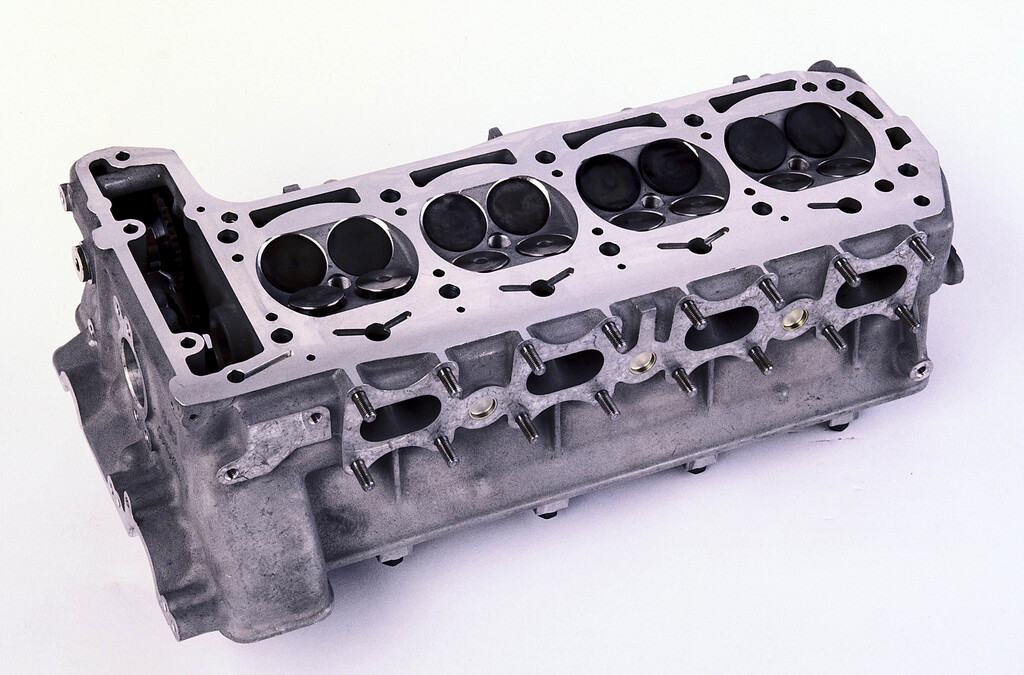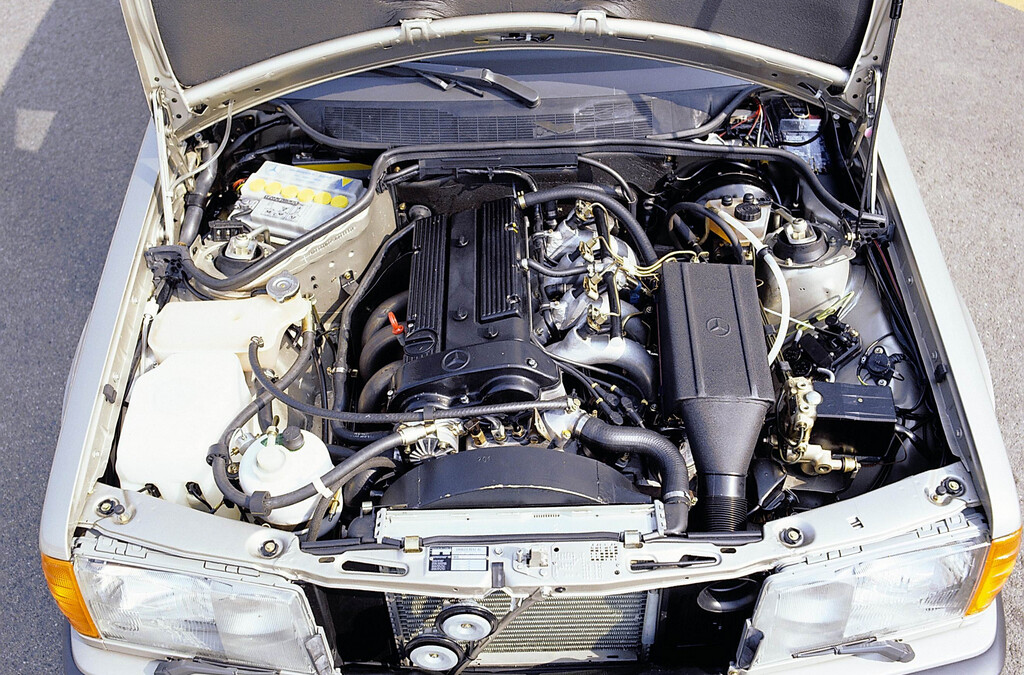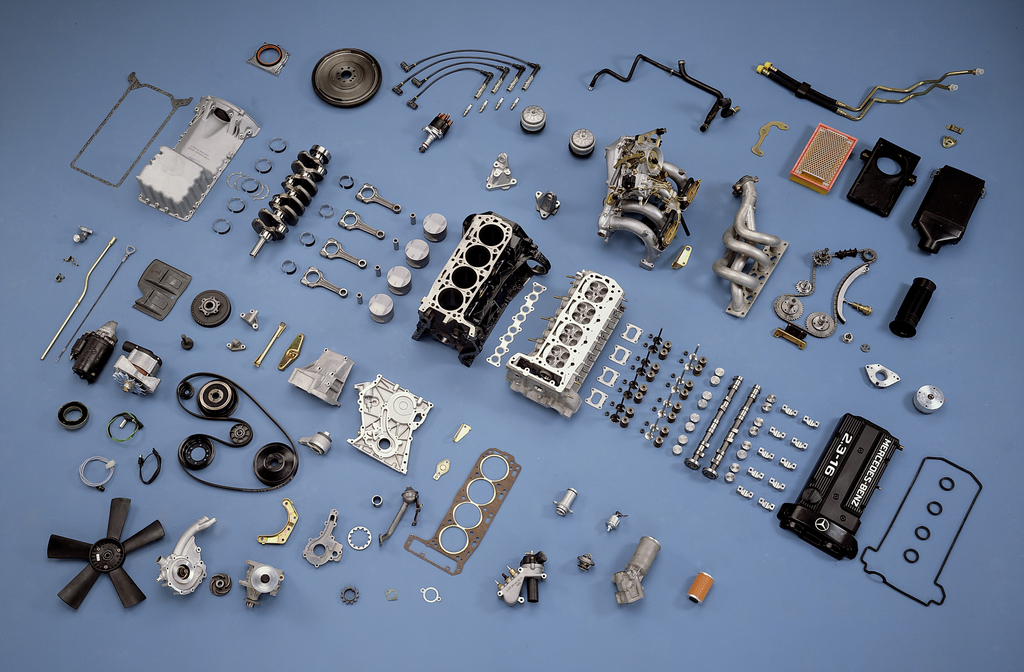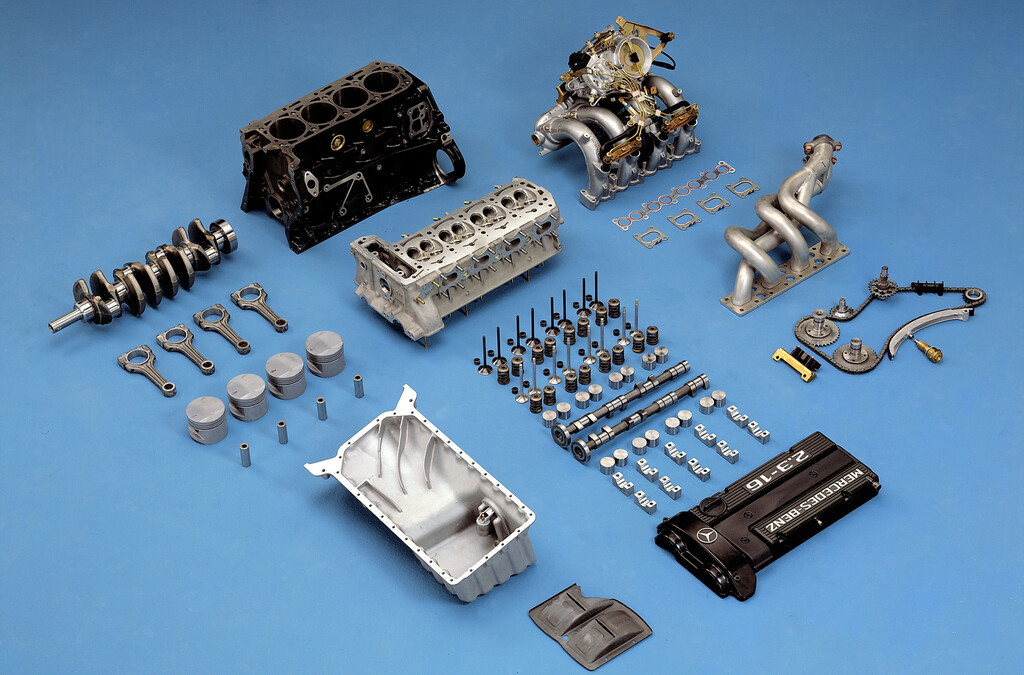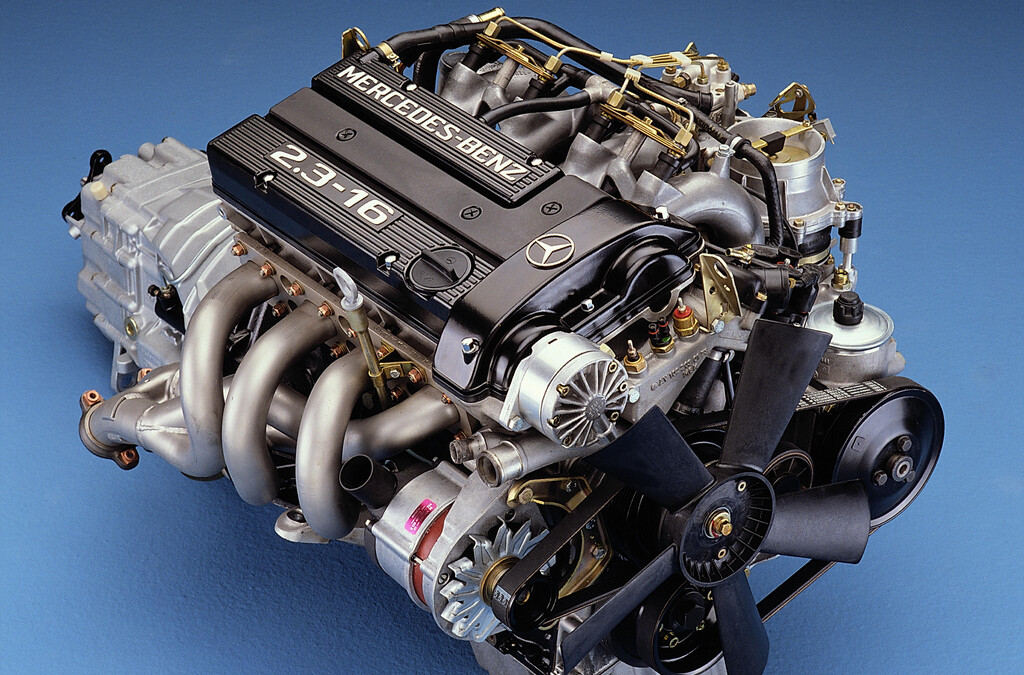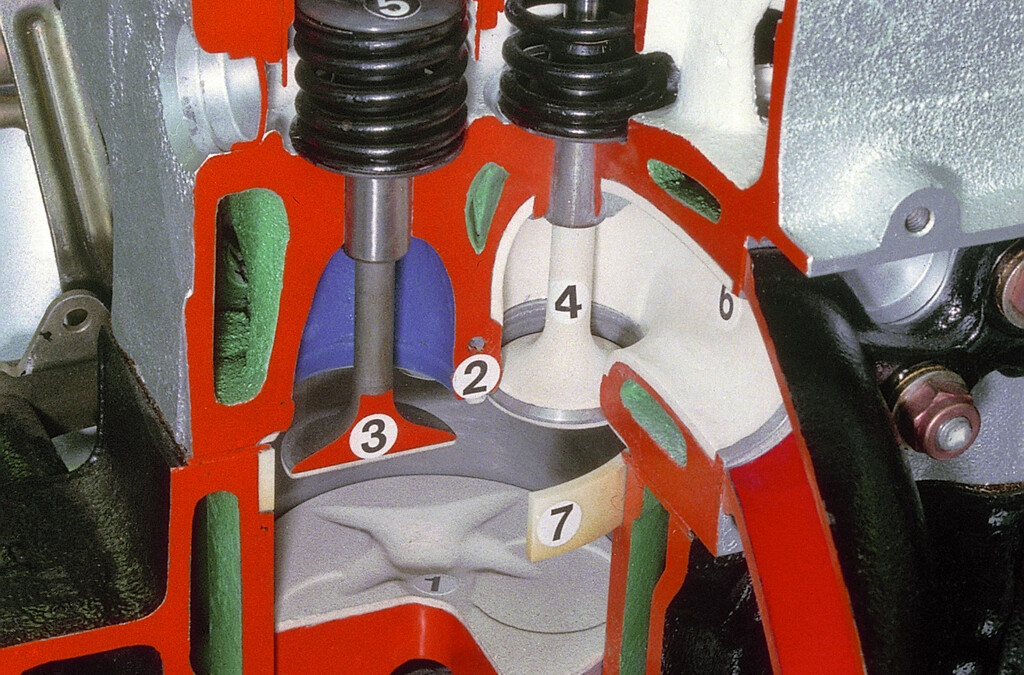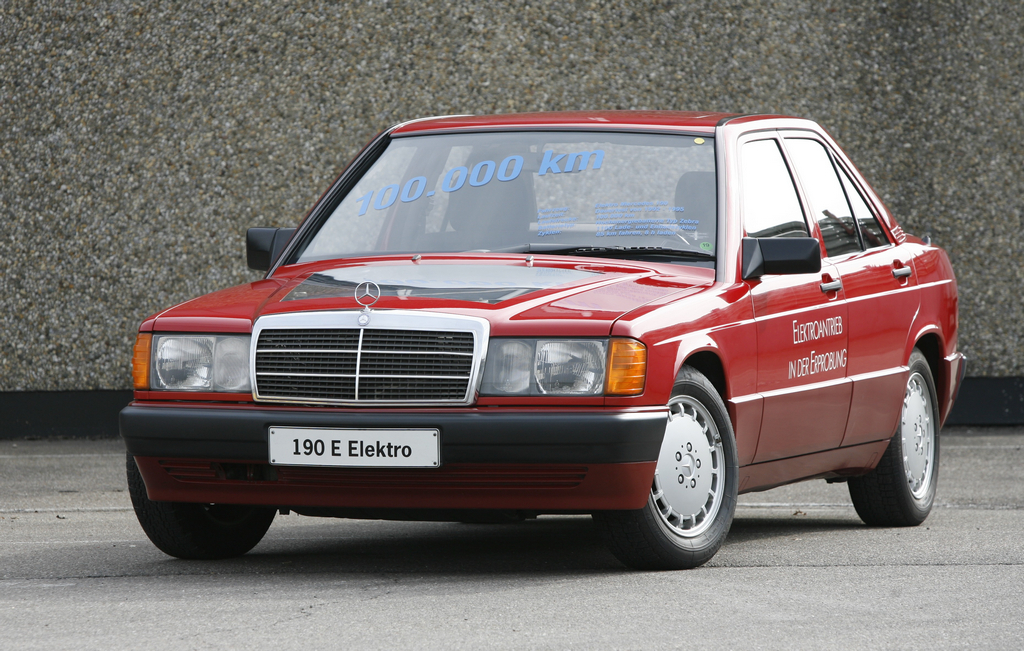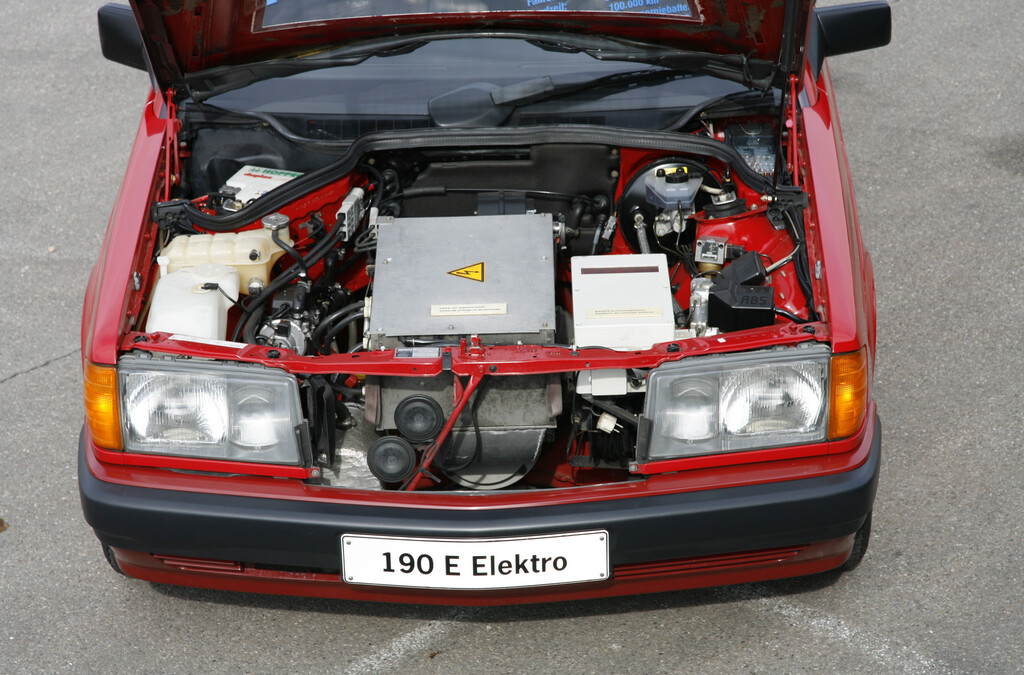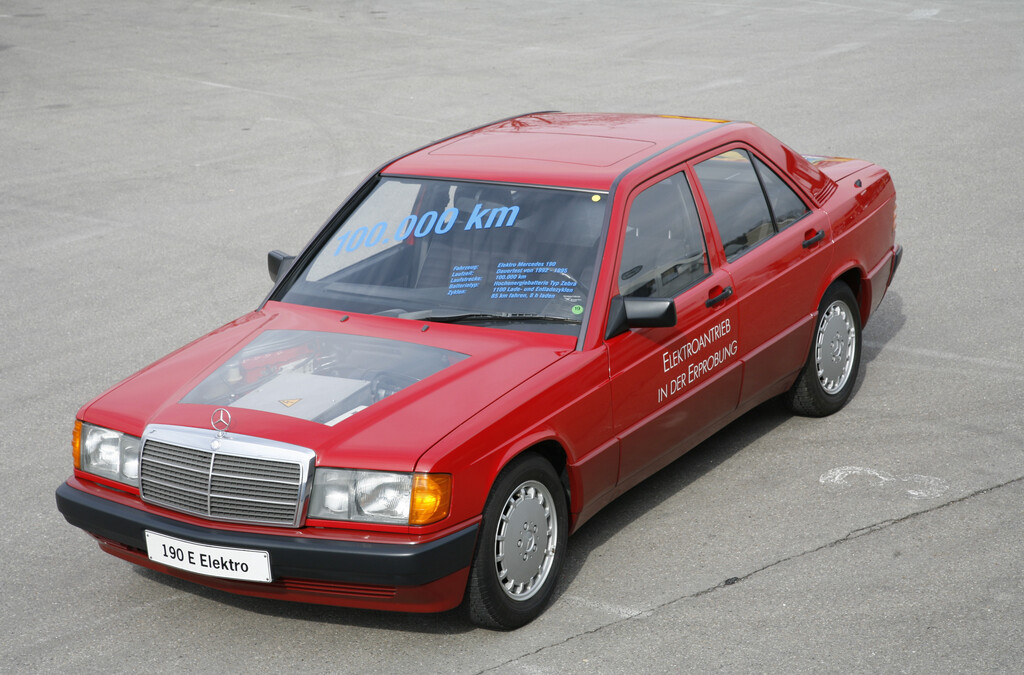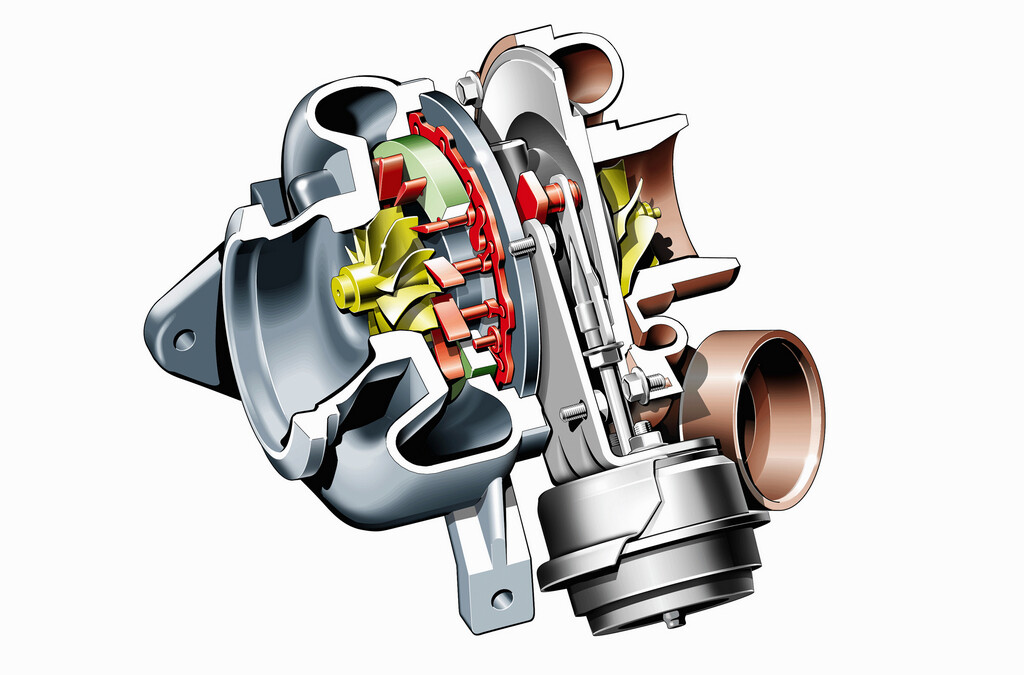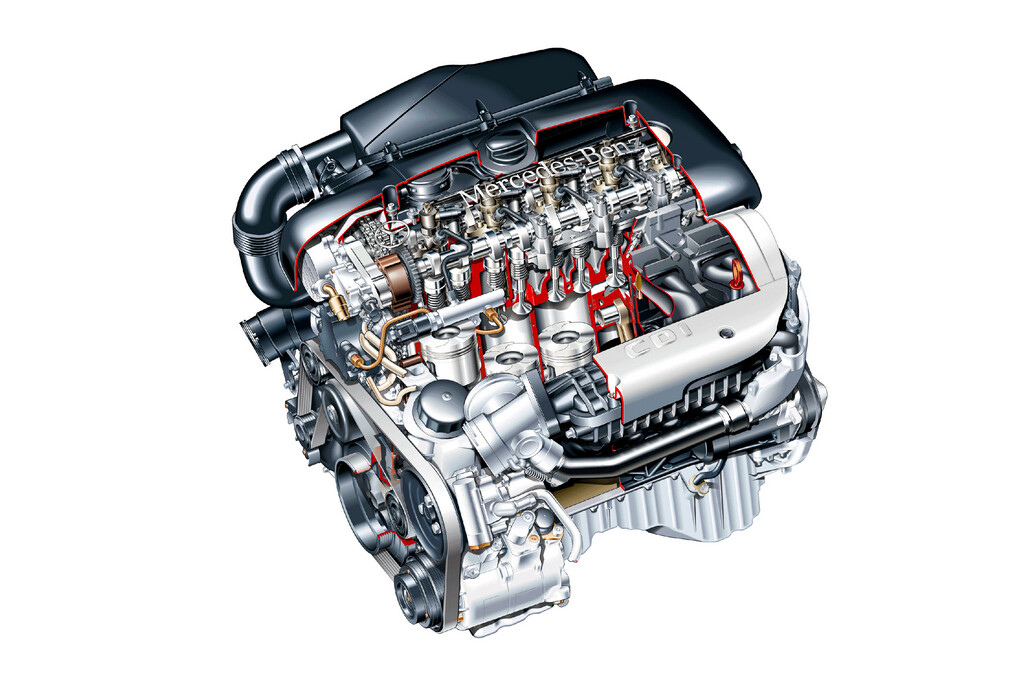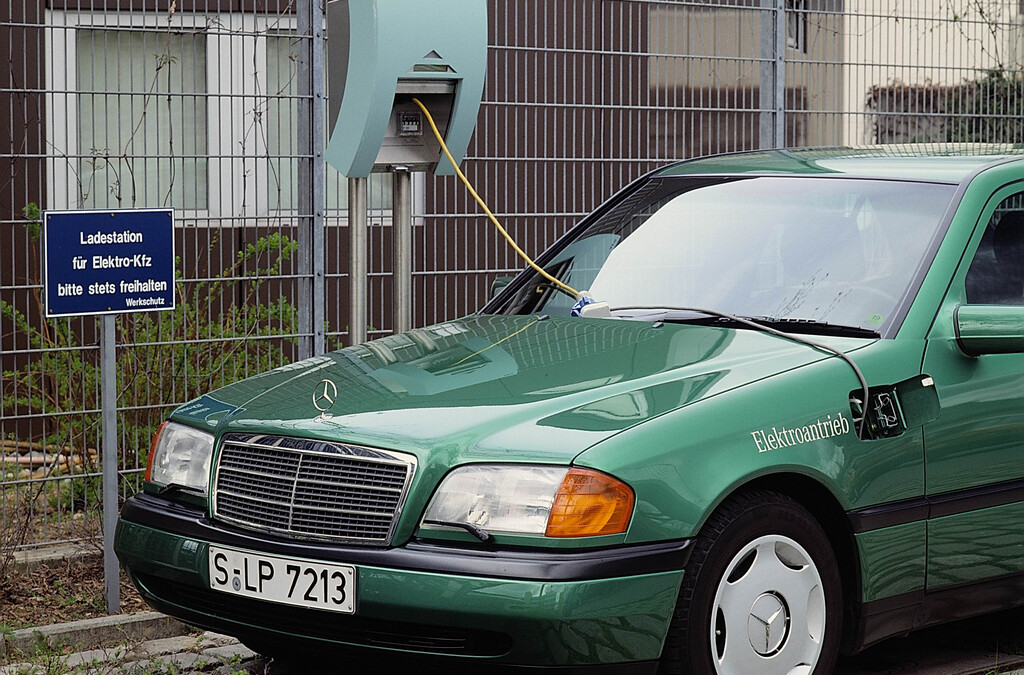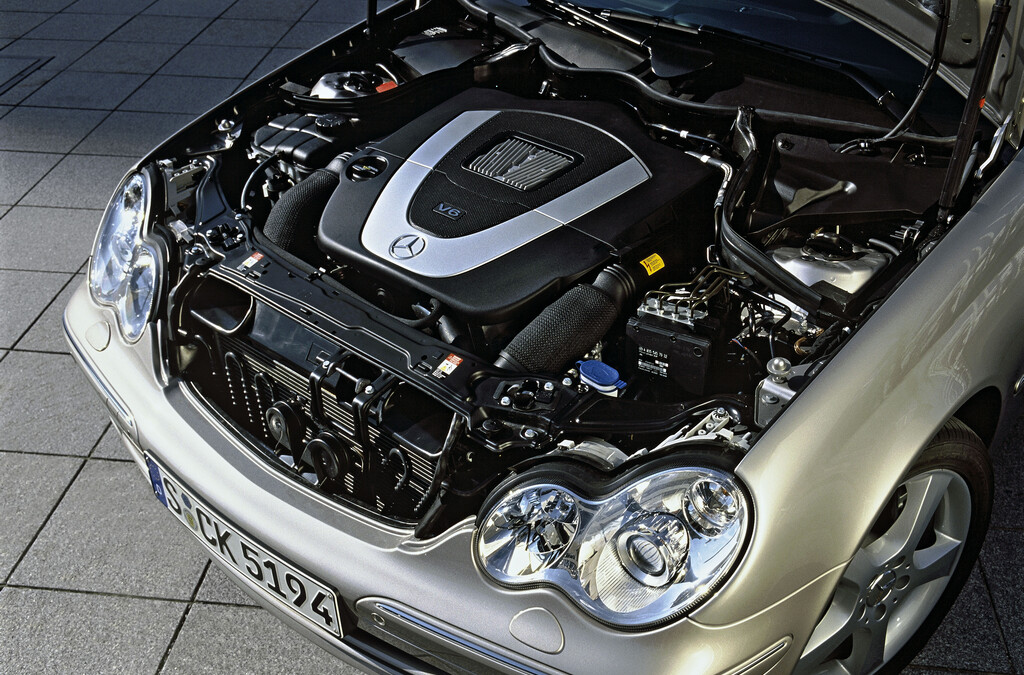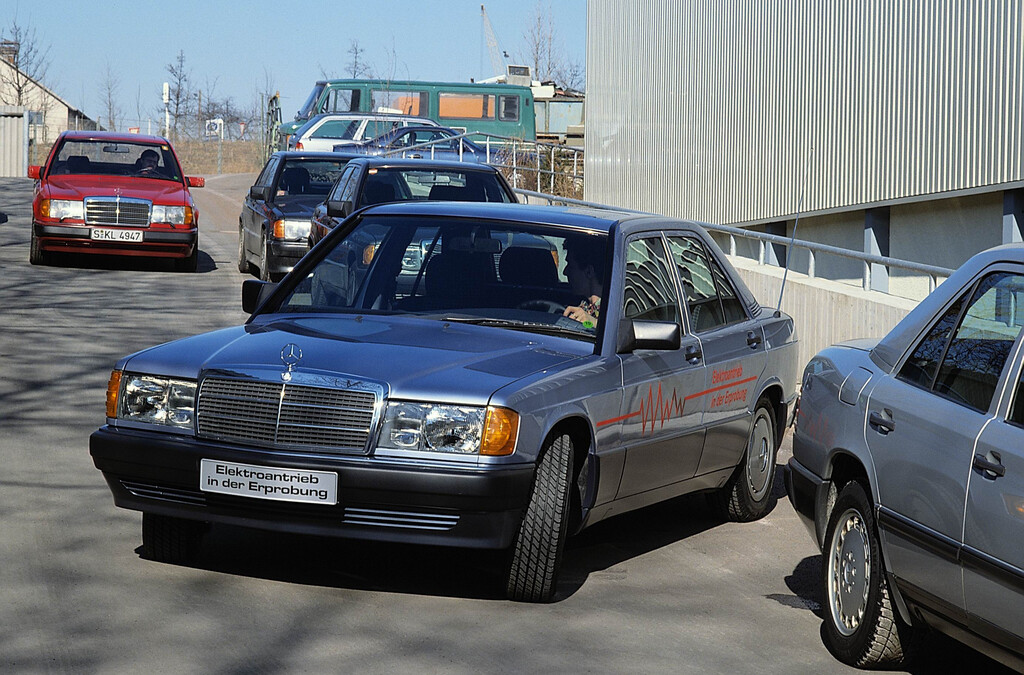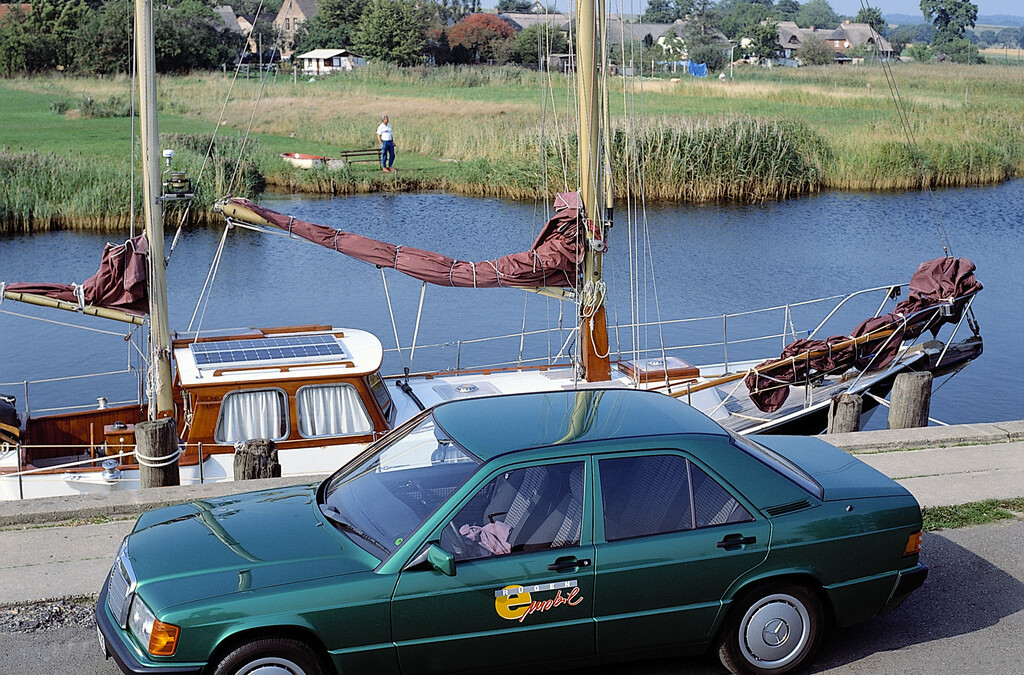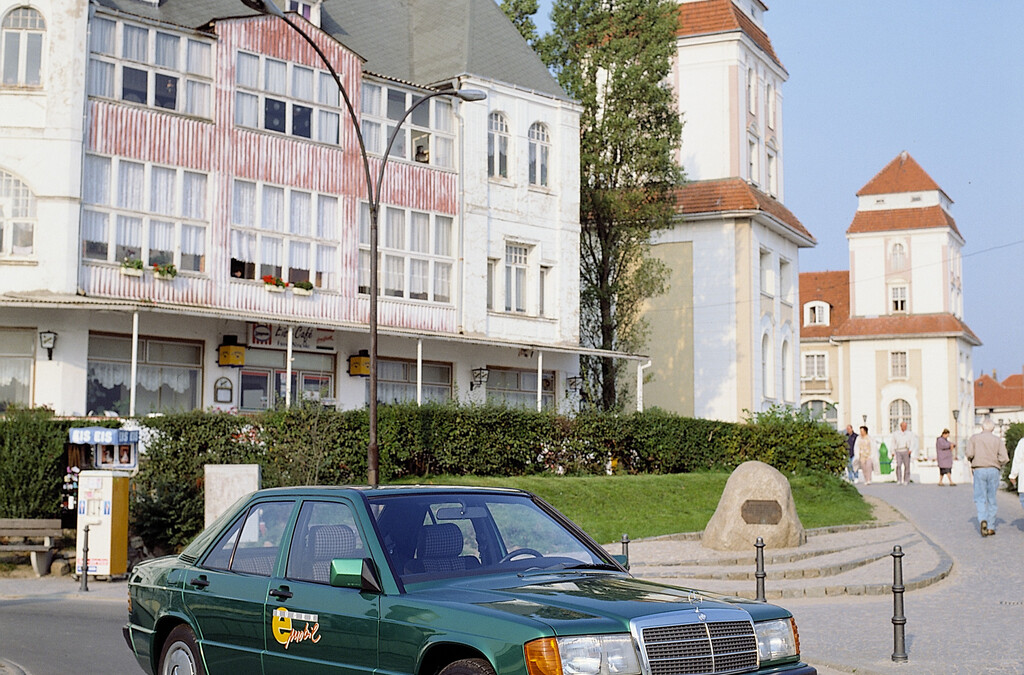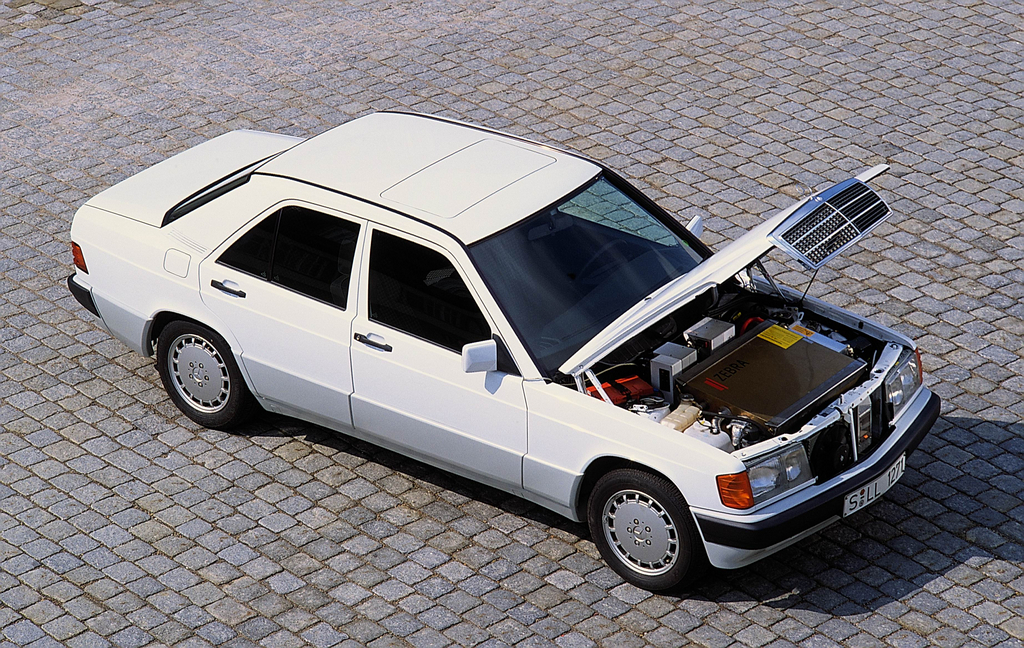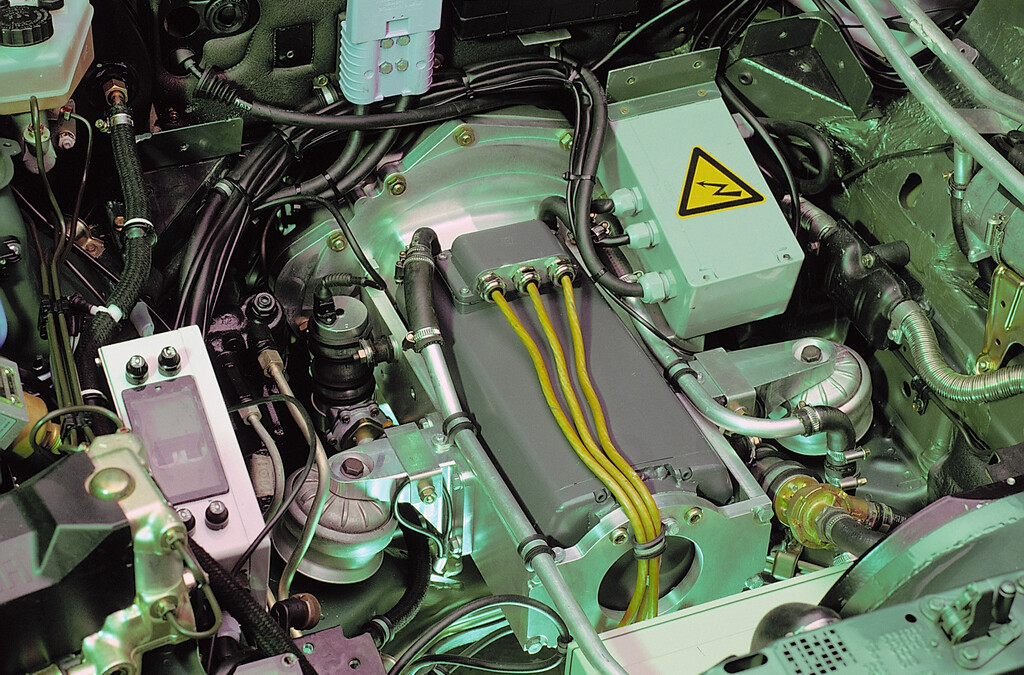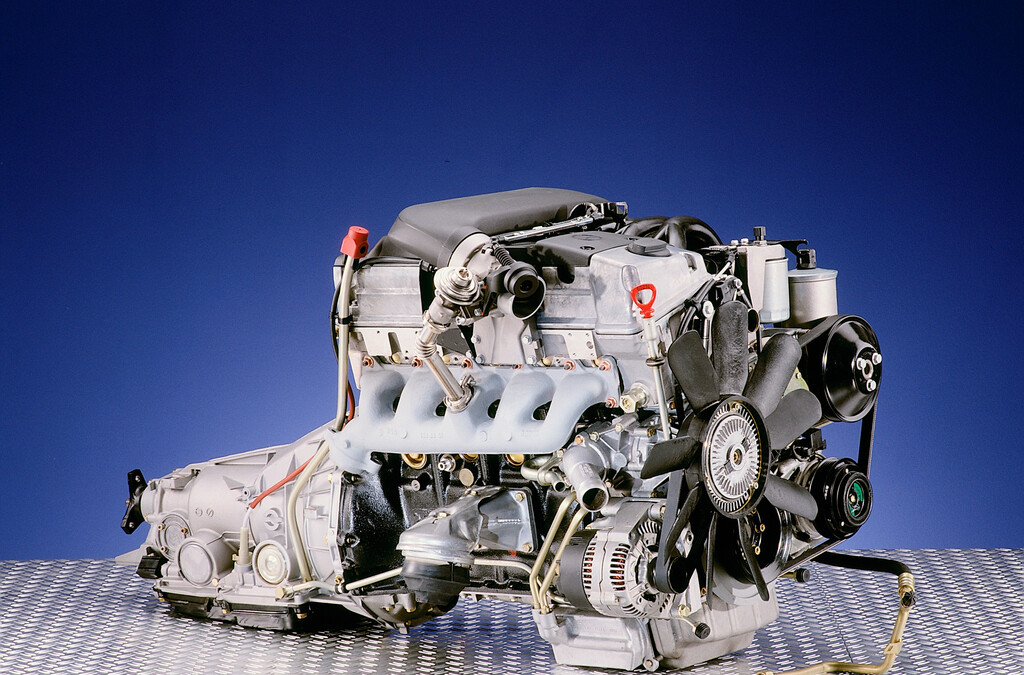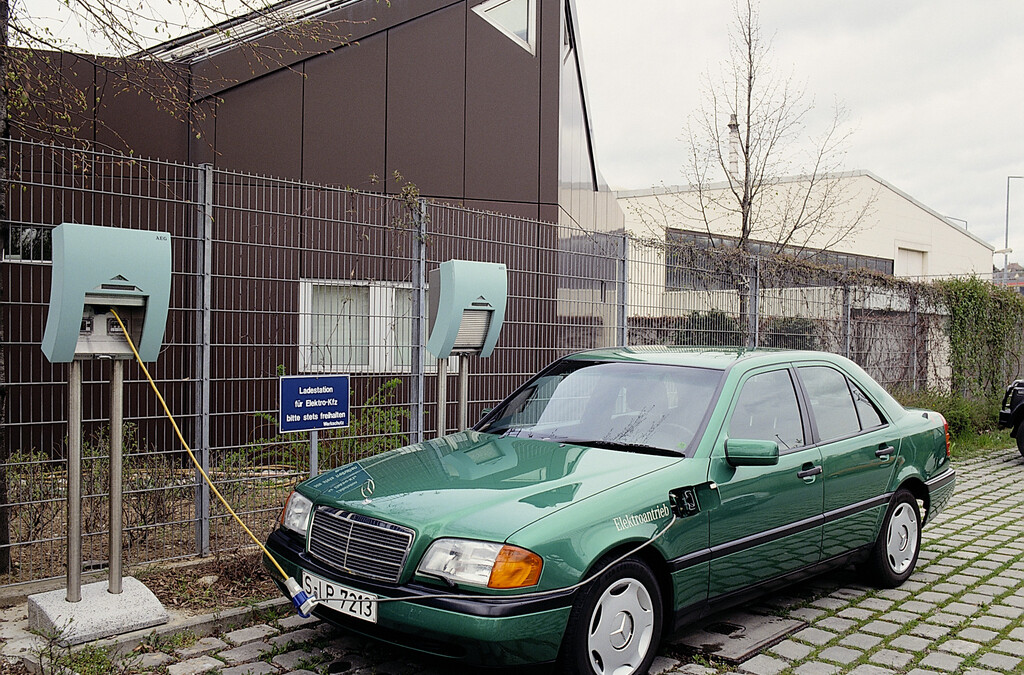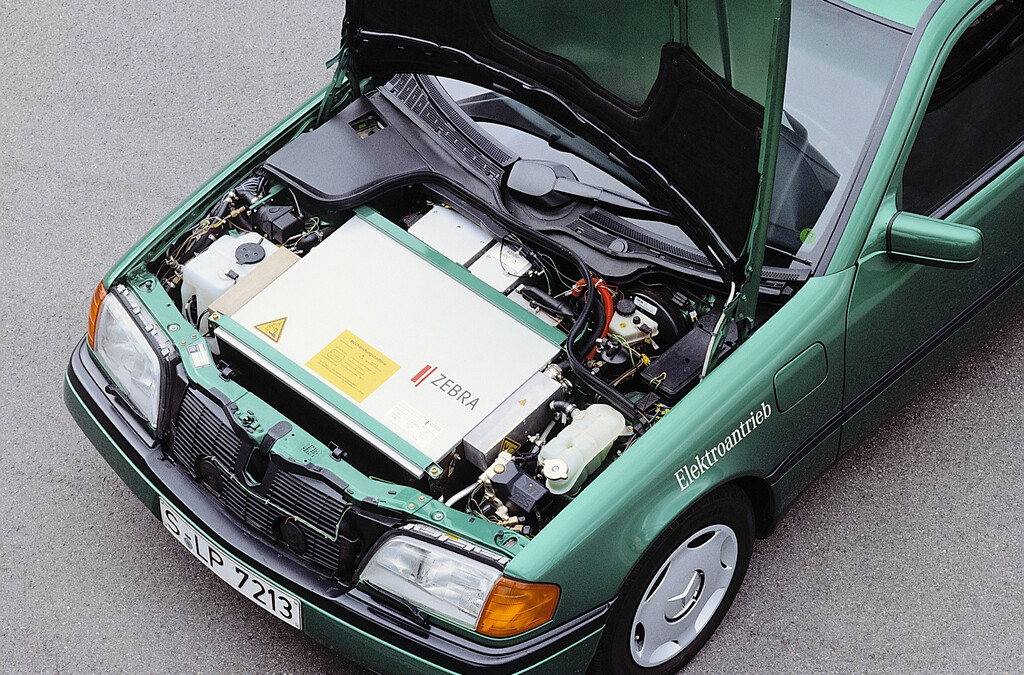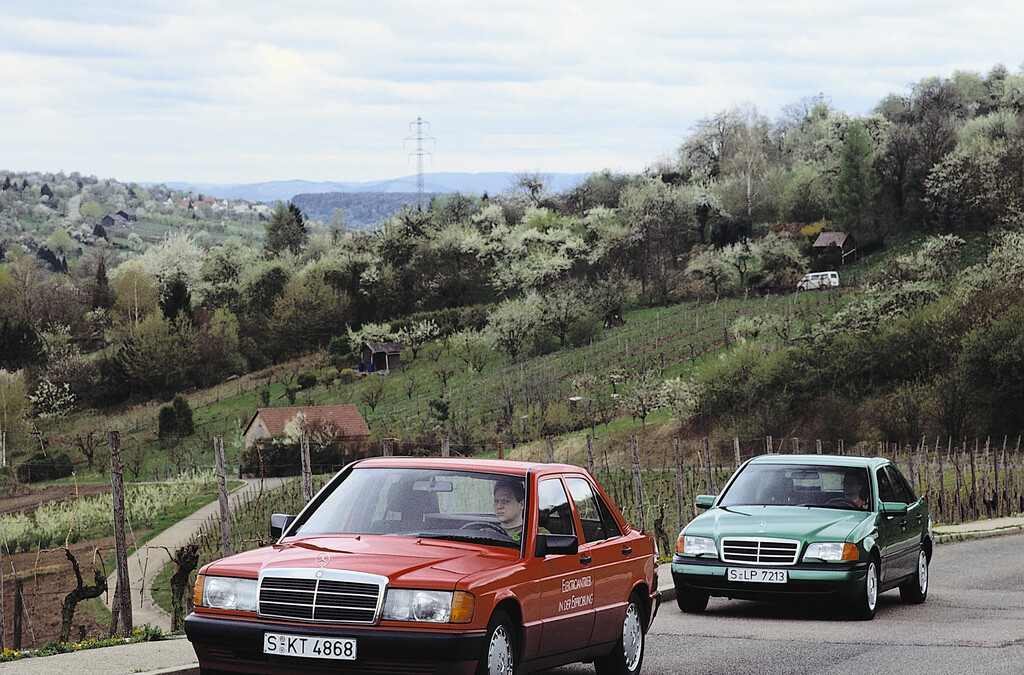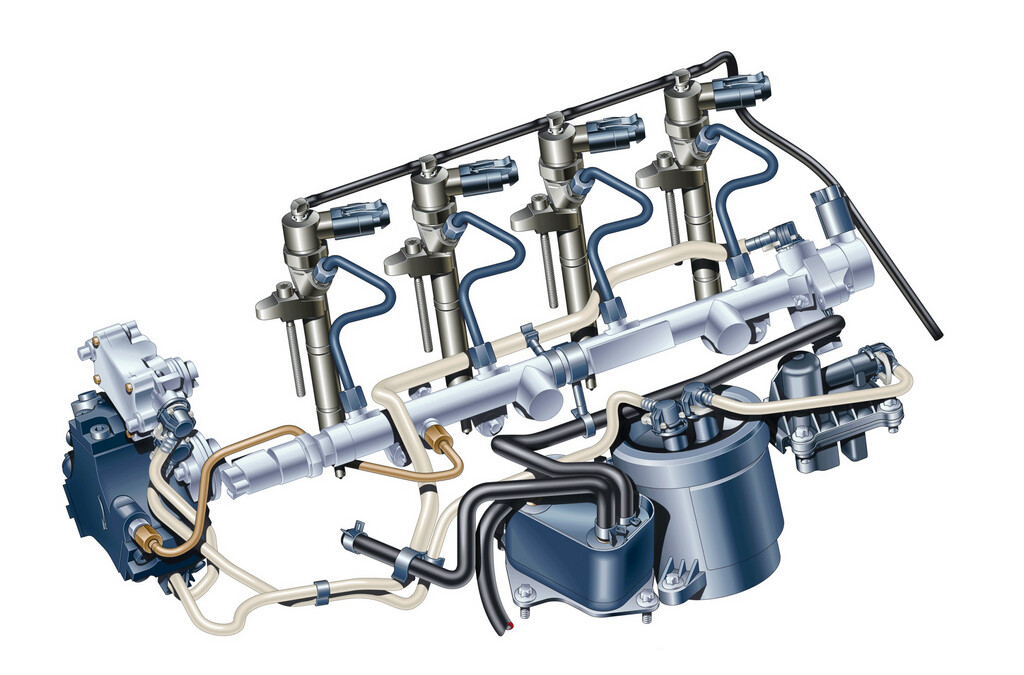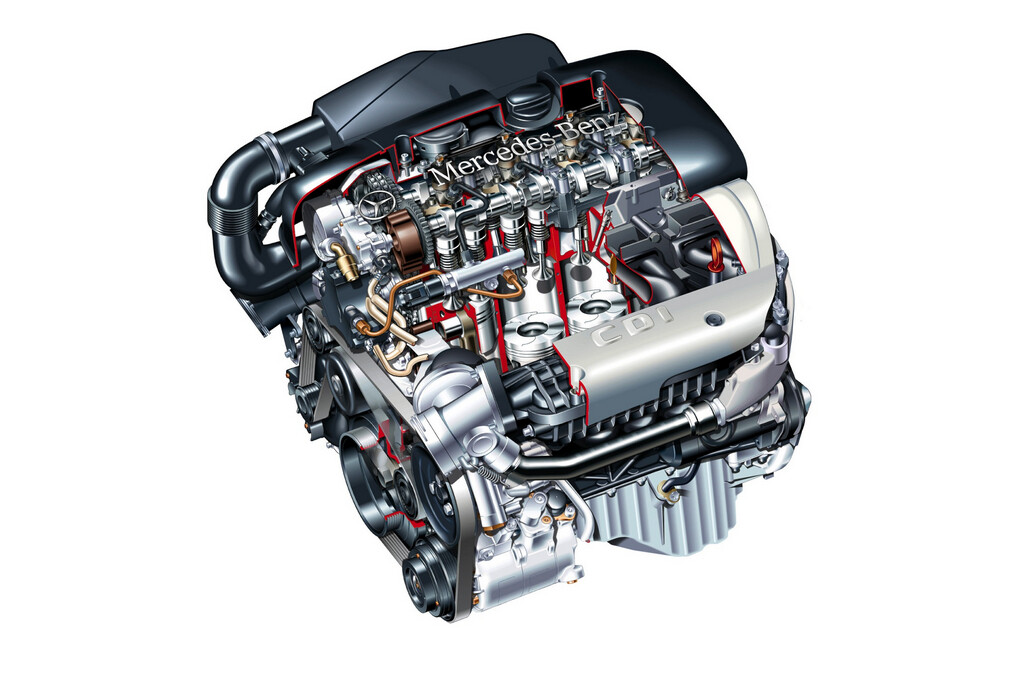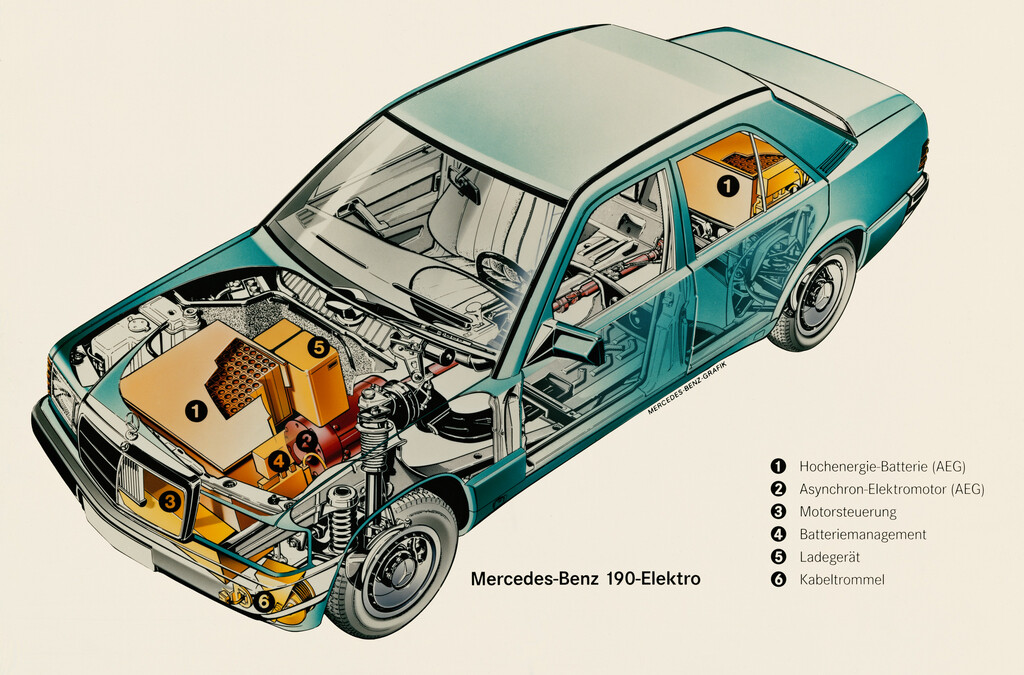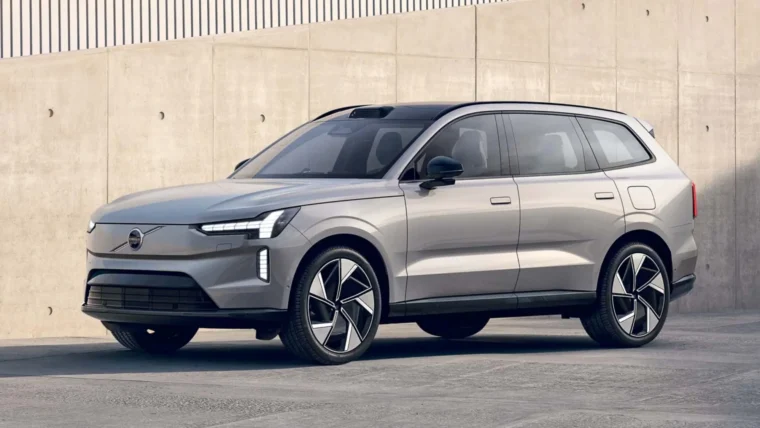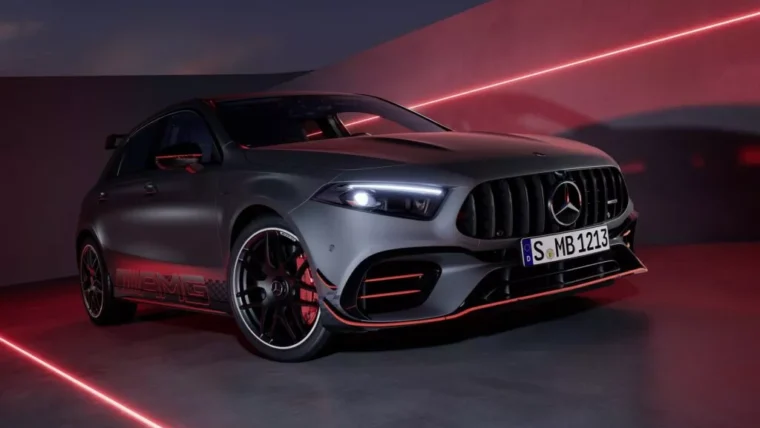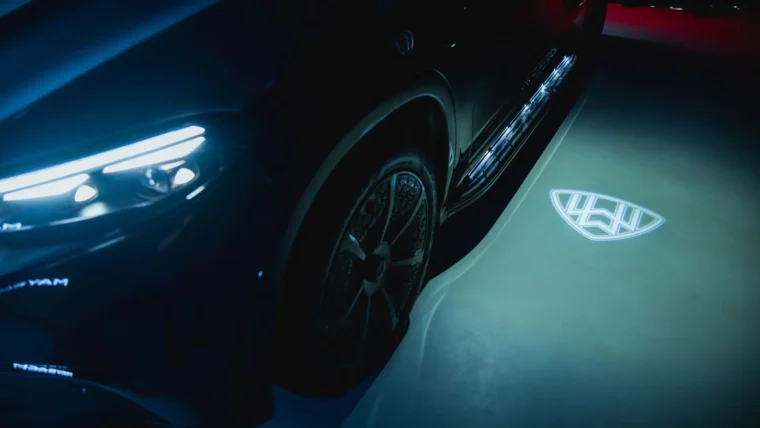The 201 model series was of key importance for the introduction of new internal combustion engines and the testing of drive configurations – a tradition that all subsequent C-Class model series continued seamlessly. It was not just internal combustion engines that won their place in the history of technology in this way. Alternative drives were also tested in the various model series of the Mercedes-Benz compact class. These systems made the vehicles pioneers in forward-looking mobility.
Modern-era diesel drive systems
One of the main reasons behind the success of model series 201 from 1983 onwards were the then newly developed diesel engines with four (OM 601) or five (OM 602) cylinders. They all had the characteristics of a modern compression-ignition drive system – low fuel consumption, low emissions, lower friction losses, low noise emissions – yet they offered a higher engine output and more torque. The turbocharged variant of the OM 602 also successfully dispelled the image that diesel vehicles were ponderous affairs: it propelled the 190 D 2.5 Turbo launched in 1986 from 0 to 100 km/h in just 11.5 seconds.
Another famous feature was the encapsulation of the diesel engines in the 201 model series to reduce noise emissions. This led to the vehicles being given the nickname “whisper diesel”. This sound-minimising package was a key factor behind the diesel engine’s successful march towards greater acceptance and higher volumes.
Model series 202 was then made ready for a big premiere: at the Frankfurt International Motor Show (IAA) in September 1997, Mercedes-Benz ushered in a new era by introducing the first passenger car diesel engine with common-rail injection. The OM 611 in the C 220 CDI was the first engine to be based on this principle, which revolutionised diesel drive and remains the preferred injection concept for compression-ignition engines to this day. It makes the diesel engine even more economical and can be developed even more exactly to ensure low emissions. The Mercedes-Benz abbreviation “CDI” became synonymous with efficient drive systems. From 2003 onwards, all diesel engines in C-Class model series 203 were based on the common-rail principle.
C-Class model series 204 marked another big premiere at the end of 2008: the OM 651 engine, which combined the latest technology with high output, high torque, low fuel consumption and low emissions. It was even later used in the S-Class, making this the first luxury-class vehicle to feature a four-cylinder engine. The engineers enjoyed installing the OM 651 in a test vehicle – a W 201 model from 1982 – firstly to emphasise its role as a pioneer in diesel technology and secondly to underline the progress made in developing the compression-ignition engine over a period of 25 years.
Powering ahead with petrol engines
“Business as usual” – this motto initially applied to the petrol engines for model series 201. The engines had already featured in other Mercedes-Benz vehicles. The four-valve version of the M 102, which premiered in the 190 E 2.3-16 model in 1983, caused a sensation: not only was it the first series-produced petrol engine with four valves for a Mercedes-Benz passenger car, it also proved a success by being installed in some 19,487 vehicles. This engine became the basis for further production development of four-valve engines that have now long been the technological norm.
In 1995, the Mercedes-Benz designers remembered the legendary supercharged engines with belt-driven supercharger. The renaissance of this technology in passenger cars began with the 2.3-litre four-cylinder engine M 111, which had its production premiere in the C 230 Kompressor at the 1995 Frankfurt International Motor Show. The engine was around a fifth more economical than a similarly powered naturally aspirated engine. This technology allowed high torque with low fuel consumption and low emissions.
At the other end of the power spectrum, the C 43 AMG was unveiled in 1997. It was the first vehicle in the Mercedes-Benz compact class to feature a V8 engine. An output of 225 kW(306 hp) speaks for itself – in the language of AMG, Mercedes-Benz’s performance brand. The C 63 AMG model (204 model series) impressively continued this tradition from 2007 onwards. Its 6.2-litre V8 engine (M 156) remains the largest-displacement and highest-torque engine in a compact-class vehicle to this day.
Electric drive in model series 201 and 202
It was not just internal-combustion engines that continued to set trends in the Mercedes-Benz compact class. Alternative drive systems did too, pointing a way ahead for the automotive industry. A test car based on model series 201 was presented at the Hanover show’s innovation market in 1990 and the Geneva Motor Show in 1991. It featured two permanent magnet excited electric motors fed by sodium/nickel chloride batteries, each of which had an output of 16 kW (22 hp) and was used to drive one rear wheel. One key advantage of this design was the omission of weight-intensive mechanical components. The vehicle paved the way for further developments in electric drive systems.
Between 1992 and 1996, a road test involving 60 passenger cars and vans made by various manufacturers was conducted on the island of Rügen. Several Mercedes-Benz vehicles took part in the four-year test, including 10 passenger cars from the 201 model series with various electric motor/battery combinations. One of these vehicles was used particularly intensively, and clocked up an annual mileage of 100,000 kilometres on the island.
Seven of the electric 190 models weighing around 1,400 kilograms each had a sodium-nickel-chloride high-temperature battery, were used for testing various asynchronous engines and achieved a range of around 110 kilometres. Thanks to the torque characteristics of the drive system, no transmission was required. Three of the test vehicles with synchronous drive system featured nickel-cadmium batteries with a range of around 40 kilometres; these were equipped with a standard manual transmission. All of the vehicles were fitted with two batteries – one at the front and one in the boot – which were connected using heavy-duty cables in view of the peak currents of up to 400 A. The vehicles were charged at special filling stations with solar collectors to ensure systematic testing of the environmental credentials.
An electric vehicle with an asynchronous motor developing 35 kW (48 hp) and a range of around 110 kilometres, based on model series 202, was then exhibited at the 1993 Frankfurt International Motor Show. This vehicle featured powerful ZEBRA high-energy batteries; the acronym stands for “Zero-Emission Battery Research Activities”. One special feature of this vehicle was the innovative positioning of the batteries and powertrain components which. thanks to their size and installation locations, ensured spaciousness on a par with the standard saloon. Also on display at the Frankfurt International Motor Show were two early research vehicles with hybrid drive based on model series 202: one with a parallel hybrid drive, the other with a serial hybrid drive. Both provided key information for the introduction of hybrid technology into production at Mercedes-Benz several years later.
Model series 201 and 202 were therefore technology pioneers used for the early testing of electric and hybrid drive systems in passenger cars. This pioneering spirit lived on in all subsequent Mercedes-Benz vehicles with forward-looking drive systems, whether test vehicles or ultimately production vehicles.
Other posts by AF Newsdesk

